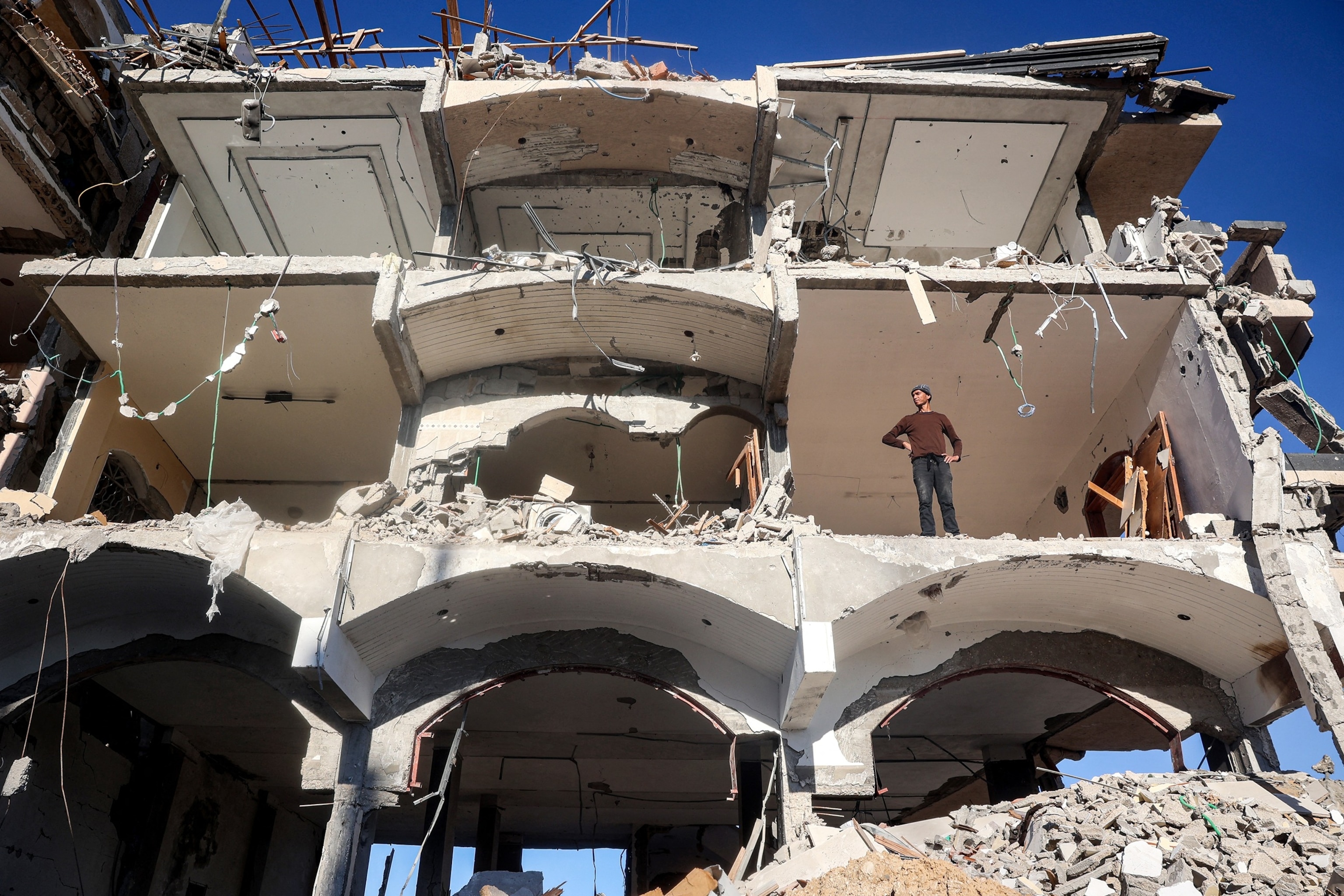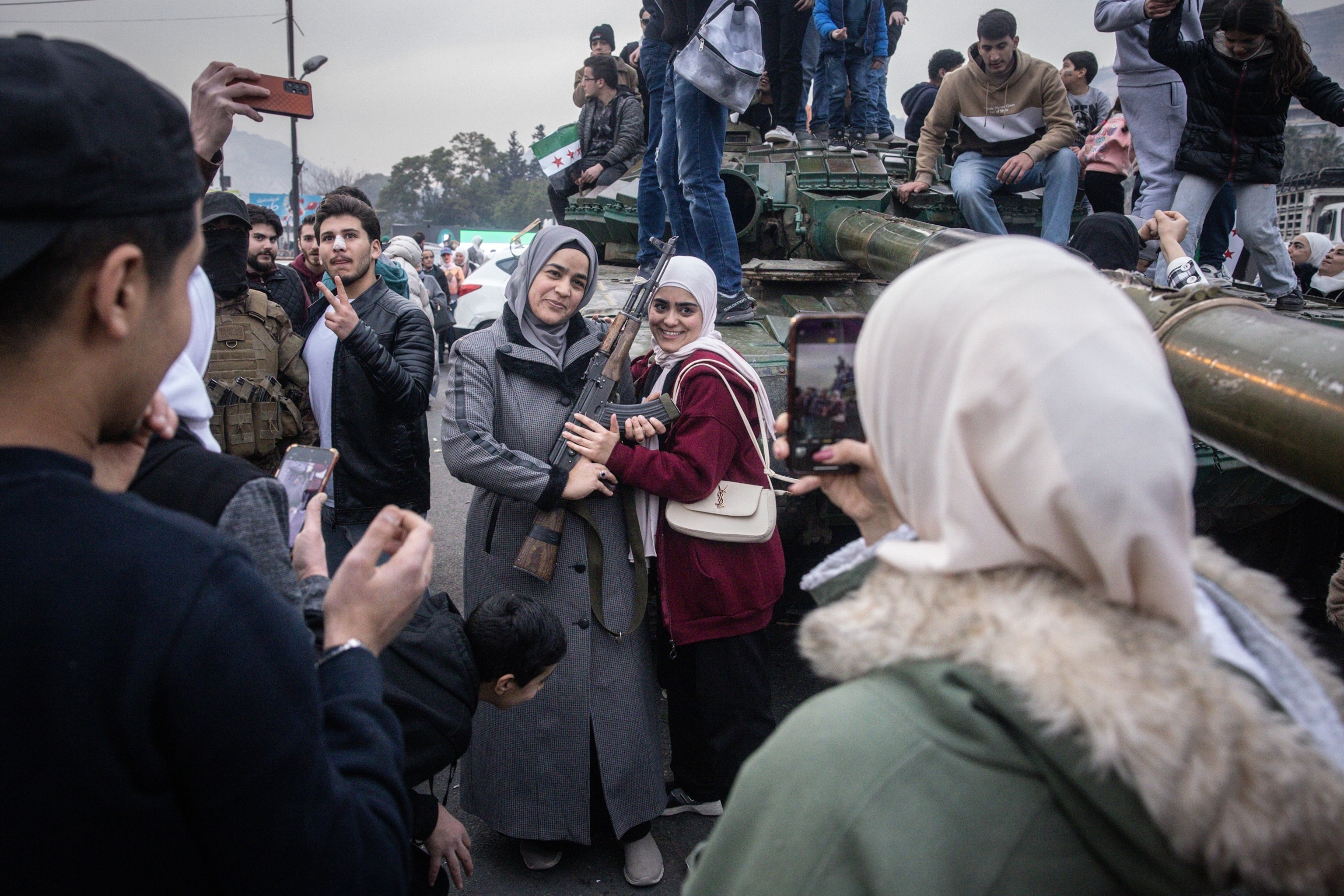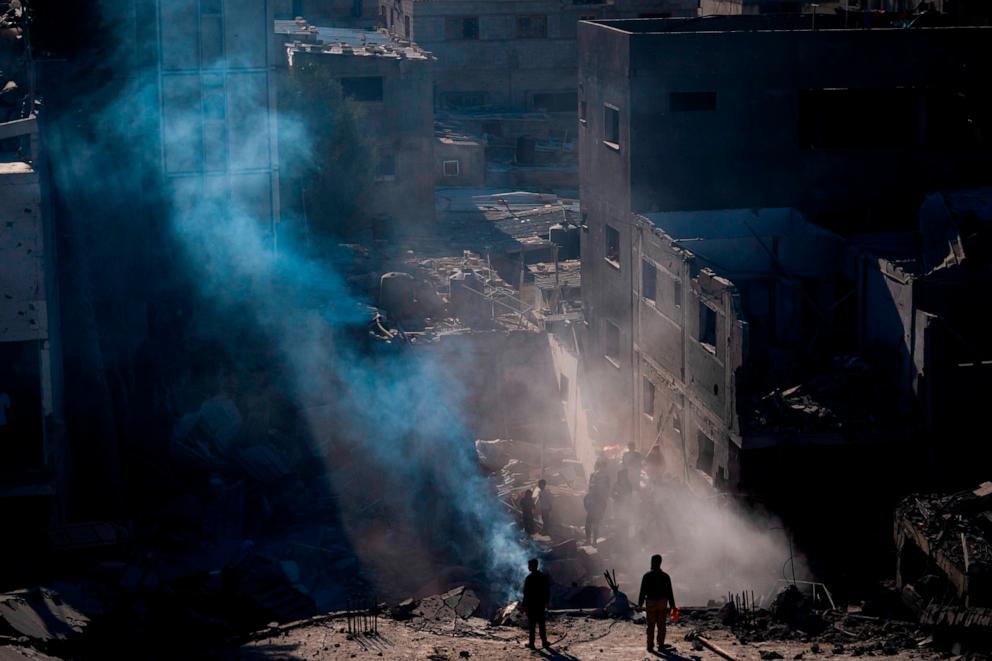'Extremely difficult': What would be Israel's objectives in an offensive into Gaza?
Former senior U.S. military officials weigh in on expected brutal urban warfare.
Israel's warning on Friday to residents of northern Gaza to evacuate toward the southern Gaza Strip fueled speculation Israel was about to launch a major ground incursion into Gaza.
Since Hamas launched deadly rocket barrages and a large-scale ground attack on an Israeli military base and border towns that have killed more than 1,300 Israelis, Israel has responded by dropping nearly 6,000 bombs against what it says are Hamas targets inside Gaza, airstrikes that Palestinian health authorities estimate have killed more than 1,800 civilians and wounded 7,000 more.
Over the past week, Israel has amassed armor and tens of thousands of troops around the Gaza Strip and called up 360,000 reservists, appearing to prepare for an offensive targeting Hamas.
What would a large-scale ground operation look like in Gaza, one of the most densely populated areas on earth where two million Palestinians live in an area just 4 to 7.5 miles wide and 25 miles long?
ABC News spoke with senior former U.S. military commanders and analysts about the objectives of an offensive, how it could unfold and what problems Israeli troops could face.

A tough urban fight
Israel's stated objective is to eliminate Hamas in Gaza, but to do that will require ground troops in extended urban warfare, retired Gen. Kenneth "Frank" McKenzie, the former commander of U.S. Central Command, told ABC News.
"It will be extremely difficult to carry out combat operations in Gaza if the Israelis choose to do it now," said McKenzie, who is now the executive director of the University of South Florida's Global and National Security Institute and its Florida Center for Cyber Security.
"Fighting in a built-up area is the most difficult of all combat operations and Gaza is uniquely dense, uniquely packed, high-rise buildings ... plus Hamas has had years to put an elaborate tunnel system into place, which would make it even more difficult," he added.
Israel-Gaza-Lebanon-Syria conflict: Slideshow
McKenzie predicts it will be "an ugly bloody messy fight" and believes that after Israeli troops break through the barriers around Gaza they will be engaged in "block-by-block" fighting. But McKenzie believes Israel will be well equipped for that style of fighting by using robotics and Merkava tanks he described as being "a very good urban warfare tank."
"In order to clear buildings, basements and the extensive network of tunnels they will have to dismount their infantry and essentially fight soldier-on-soldier and block-by-block in the built up areas," said Mick Mulroy, a former deputy assistant secretary of defense for the Middle East and an ABC News contributor.
Retired Gen. Robert Abrams, the former commander of U.S. Forces Korea, told ABC News that an Israeli incursion into Gaza will be "extraordinarily difficult" given that the advantage in an urban area will "shift to the defender and they've had years and years of preparing this defense."
"They'll have all sorts of improvised explosive devices. They'll they've had months to cache weapons, ammunition," said Abrams. "There's probably significantly more tunnels now. So, there's a subterranean element to this so I think it's going to be extraordinarily difficult for the Israelis."
He noted that both Israel and Hamas learned lessons from Israel's much more limited incursion in 2014 during which he believes Israel got "their nose bloody, pretty bad to be honest."

How would an offensive start?
On Friday, Israel's Defense Force disclosed that Israeli troops had begun to carry out localized raids into Gaza, something that the experts contacted by ABC News had fully anticipated as an effort to probe for weaknesses in Hamas defenses.
"I have every expectation they're going to attack from multiple directions at the same time, and in multiple domains," Abrams said of Israel's strategy. "So, air, sea land, cyber, electronic warfare, they'll be using all of those domains."
Initial operations could include the use of airstrikes and special operations forces on the ground that could target Hamas leadership and potentially recover hostages.
According to Mulroy, the main ground assault that might follow could be launched from multiple locations across the Gaza border, including from the north, the far south, or into the central part of Gaza.
"Their main assault force would likely come in through the far north at the Erez point, the terrain around this location supports the movement of large tank and armored personnel carriers (APCs)" said Mulroy.
He also believes Israeli troops may try to enter through the far south of Gaza at Philidelphi near the Rafah border crossing with Egypt that is currently closed.
Or Israeli forces could cut Hamas's lines of communication between north to south by penetrating through mid-Gaza in a move aimed at enveloping the main concentration of Hamas fighters in the north, said Mulroy.
But it is once the fight turns into an urban fight in Gaza's city centers that the former military officials expect the fighting to get even more difficult and intense.

"Once the Israelis enter in, maneuver will be very difficult," said Abrams. "The advantage will go to the defender, even a relatively small number, but they're going to be well, well armed and determined."
Israeli troops on the ground could encounter "anti-tank mines and obstacles intended to channelize them into concentrated fires," and their planes and helicopters could be vulnerable to surface-to-air missiles, said Mulroy..
The former military commanders agree that the vast network of underground tunnels, in which Hamas has built its command posts and uses to house ammunition and weapons, will complicate the fight for the Israelis.
McKenzie said the tunnel network "allows them to move around out of fire, and while the civilians are suffering on the surface, Hamas leadership is living pretty well underground."

Civilian casualties
During his trip to Israel on Friday to meet with Israeli leaders, Defense Secretary Lloyd Austin cited his personal experience of having served alongside Israeli forces during his 41 years of military service as an indicator to him that Israel is seeking to prevent civilian casualties in its airstrikes in Gaza and in future fighting."My experience in working with the Israeli forces is they are professional, they're disciplined and they are focused on the right things," said Austin. "And so, I expect that going forward, they will continue to exhibit that same degree of professionalism that we've seen in the past."
From 2004 to 2005, Abrams led an Army infantry brigade in Baghdad's Sadr City -- an urban landscape he said was similar to Gaza's -- that faced a growing insurgency. He said he learned first-hand the risks that combat in a small urban area can pose to non-combatants and in preventing civilian casualties.
"Assuming your force is going to follow the laws of armed conflict, which says must avoid injuring non-combatants, it requires discipline, precision, and a level of focus to prevent those casualties of non-combatants,' said Abrams.
The military experts interviewed by ABC News agree that Israel will face challenges in seeking to prevent civilian casualties, raising concerns about how Hamas increases the risk of civilian casualties by using them as human shields.
Hamas "seeks to maximize civilian casualties and will try to find opportunities to make those happen," McKenzie told ABC News. "We know now they put their rocket launchers in and around mosques and hospitals and places like that. So we shouldn't expect them to change now. So, the task is very daunting for Israel, it's going to be a very difficult thing for them to do.
"Combat in the built-up area always has high casualties" said McKenzie. "The Marine Corps learned that in Fallujah, in Iraq. Other militaries have learned it. It is the hardest of all places to fight, especially a modern built-up urban environment with high-rise buildings, again, that that where Hamas has had many years to prepare their defenses."
And McKenzie believes that Hamas is willing to allow civilian casualties to occur to preserve its fighting force.
"I believe they will actively and aggressively seek to make that happen," he said. "They want high civilian casualties and they will do everything they can to increase the number of civilian casualties that are involved here."








































































































































































































































































































































































































































































































